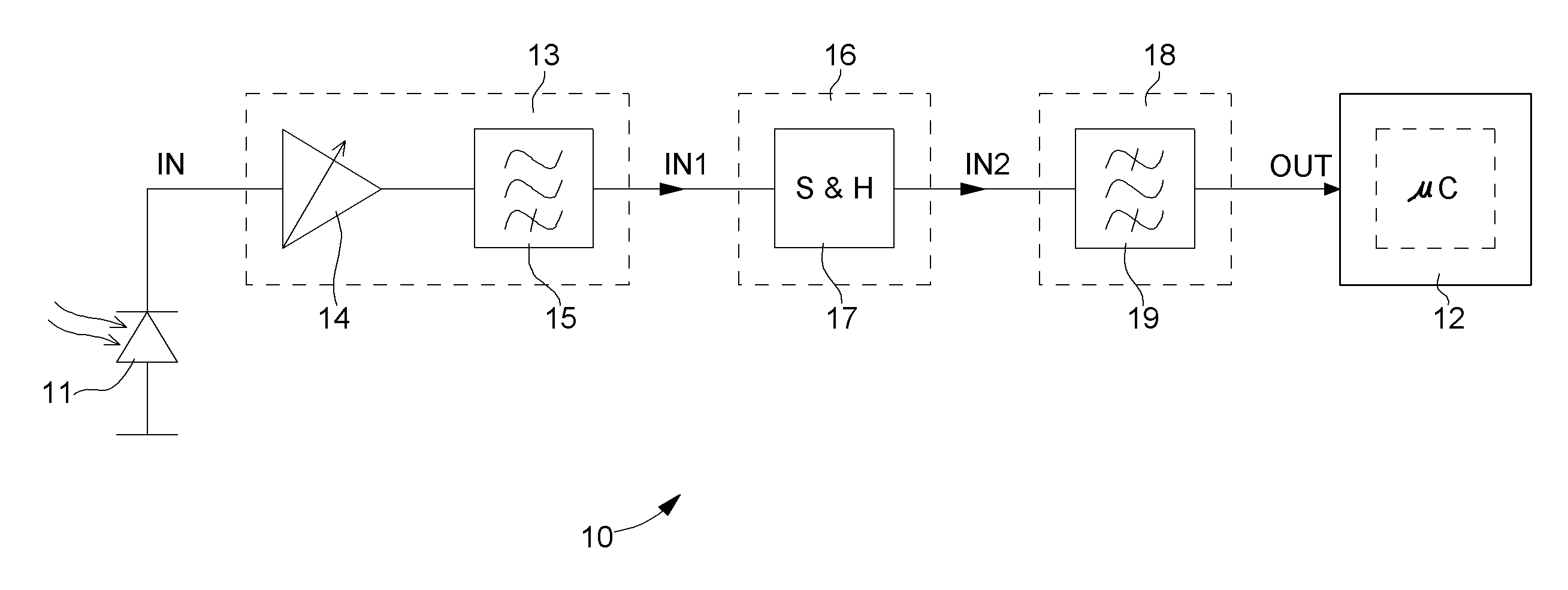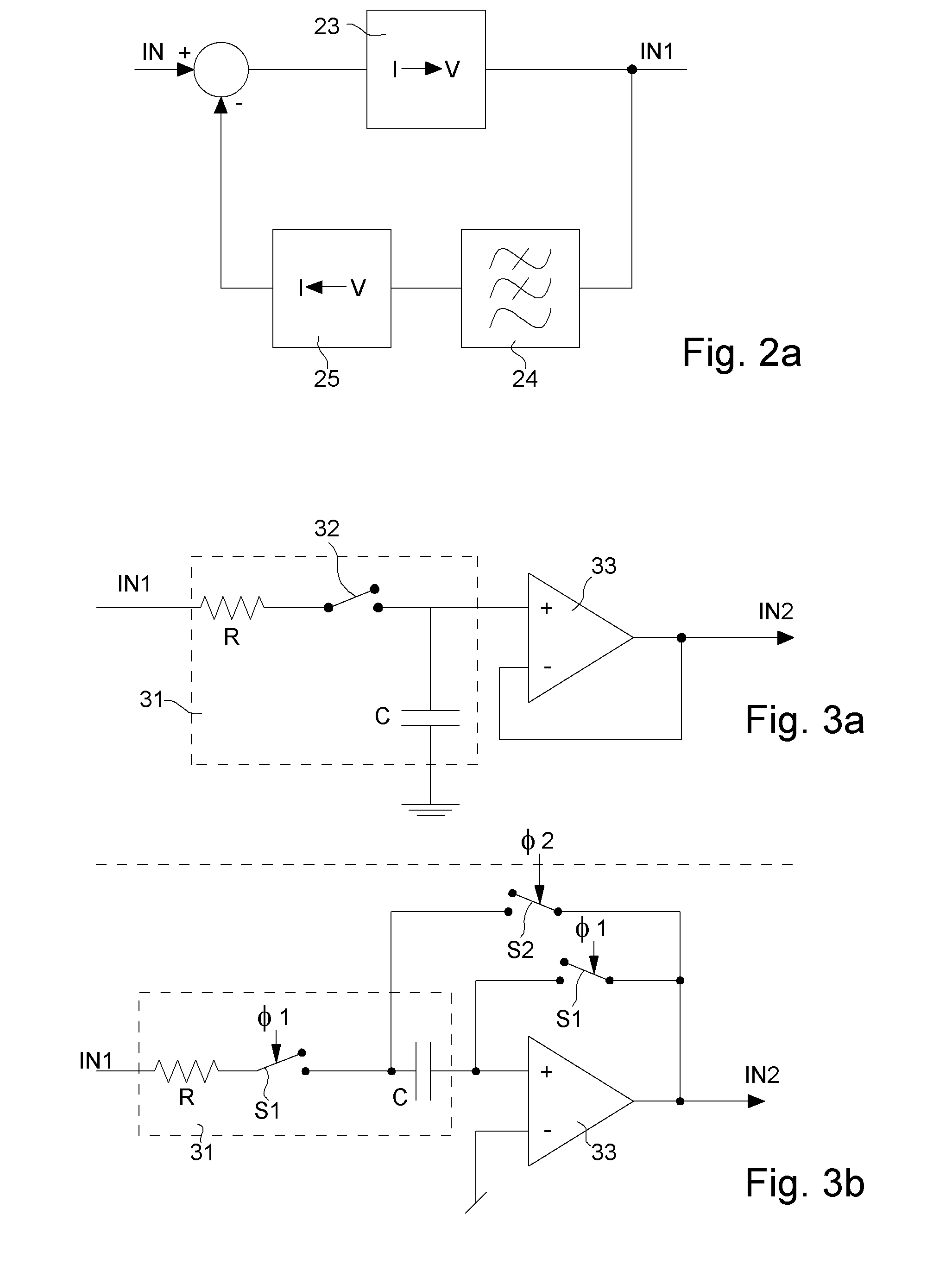Signal conditioning circuit between an optical device and a processing unit
a technology of optical devices and processing units, applied in the direction of transmission, sensors, catheters, etc., can solve the problems of limited usable gain range of amplifiers, limited space occupied in portable instruments, and limited power consumption, and achieve the limitation of available space and power consumption
- Summary
- Abstract
- Description
- Claims
- Application Information
AI Technical Summary
Benefits of technology
Problems solved by technology
Method used
Image
Examples
Embodiment Construction
[0027]The various embodiments that will now be presented are given solely by way of non-limiting illustration. FIG. 1 is a flow chart showing the whole of conditioning circuit 10 according to one embodiment of the invention. For the sake of general comprehension, FIG. 1 also shows an optical sensor 11, like for example a photodiode, a phototransistor or any other suitable optical receiver receiving an external signal IN for measuring a physiological quantity, particularly the heart rate. This external signal IN is a current signal comprising an ambient component and a useful component, said signal being obtained for example by means of an optical device including at least one light source (not shown) for subjecting a portion of an organic tissue to a light emission and at least one photoreceptor, i.e. optical sensor 11, for detecting the intensity of the light emission after propagation in the organic tissue. A central processing unit 12 is also shown, such as a microprocessor or mi...
PUM
 Login to View More
Login to View More Abstract
Description
Claims
Application Information
 Login to View More
Login to View More - R&D
- Intellectual Property
- Life Sciences
- Materials
- Tech Scout
- Unparalleled Data Quality
- Higher Quality Content
- 60% Fewer Hallucinations
Browse by: Latest US Patents, China's latest patents, Technical Efficacy Thesaurus, Application Domain, Technology Topic, Popular Technical Reports.
© 2025 PatSnap. All rights reserved.Legal|Privacy policy|Modern Slavery Act Transparency Statement|Sitemap|About US| Contact US: help@patsnap.com



